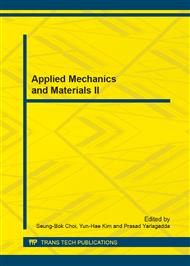[1]
Wikipedia. Magnetic stripe card. 15 July 2013 [cited 2013 17 July]; Available from: http: /en. wikipedia. org/wiki/Magnetic_stripe_card.
Google Scholar
[2]
MagnePrint. What is Magneprint. 2013 [cited 2013; Available from: http: /www. magneprint. com/index. html.
Google Scholar
[3]
Coercivity and Remanence in Permanent Magnets 2013 [cited 2013 15/06/2013]; Available from: http: /hyperphysics. phy-astr. gsu. edu/hbase/solids/magperm. html.
Google Scholar
[4]
Wikipedia. Remanence. 2013 [cited 2013 29/07/2013]; Available from: http: /en. wikipedia. org/wiki/Remanence.
Google Scholar
[5]
Wikipedia. Coercivity. 2013 [cited 2013 29/07/2013]; Available from: http: /en. wikipedia. org/wiki/Coercivity.
Google Scholar
[6]
Ferromagnetism. 2013 [cited 2013 29/07]; Available from: http: /hyperphysics. phy-astr. gsu. edu/hbase/solids/ferro. html.
Google Scholar
[7]
Meng, J.H., et al., Synthesis and characterization of magnetic nanometer pigment Fe3O4. Dyes and Pigments, 2005. 66(2): pp.109-113.
DOI: 10.1016/j.dyepig.2004.08.016
Google Scholar
[8]
Cornell, R.M. and U. Schwertmann, The Iron Oxides: Structure, Properties, Reactions, Occurrences and Uses2006: Wiley.
Google Scholar
[9]
AZoNano. Nickel Zinc Iron Oxide (NiZnFe2O4) Nanoparticles – Properties, Applications. 2013 [cited 2013 29/07/2013]; Available from: http: /www. azonano. com/article. aspx?ArticleID=3408.
Google Scholar
[10]
Tseung, A. and J. Goldstein, The preparation and characterization of ultrafine cobalt-iron oxides. Journal of Materials Science, 1972. 7(12): pp.1383-1390.
DOI: 10.1007/bf00574930
Google Scholar
[11]
Wikipedia. Binder. 2013 [cited 2013 01/08]; Available from: http: /en. wikipedia. org/wiki/Binder_(material).
Google Scholar
[12]
Williams, A., The Sculpture Reference: Contemporary Techniques, Terms, Tools, Materials And Sculpture2005: Sculpture Books Pub.
Google Scholar
[13]
Wikipedia. Dispersant. 2013 [cited 2013 02/08]; Available from: http: /en. wikipedia. org/wiki/Dispersant.
Google Scholar
[14]
Höfer, R., et al., Foams and foam control. Ullmann's Encyclopedia of Industrial Chemistry.
Google Scholar
[15]
Okazaki, M., c/o JCB Co., Ltd. (6, Kanda-Surugadai 1-chome, Chiyoda-ku, Tokyo-to, JP), Sasaki, Yoshiki, c/o Dai Nippon Printing Co., Ltd. (1-1, Ichigaya-Kaga-Cho 1-chome, Shinjuku-ku, Tokyo-to, JP), Kitami, Koji, c/o Dai Nippon Printing Co., Ltd. (1-1, Ichigaya-Kaga-Cho 1-chome, Shinjuku-ku, Tokyo-to, JP), Plastic card provided with magnetic stripe, 1999, DAI NIPPON PRINTING CO., LTD. (1-1, Ichigaya-Kaga-Cho 1-chome Shinjuku-ku, Tokyo, 162-01, JP), JCB CO., LTD (6, Kanda-Surugadai 1-chome, Chiyoda-Ku, Tokyo-To, JP).
DOI: 10.25368/2020.29
Google Scholar


